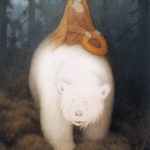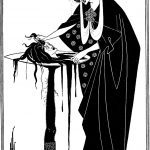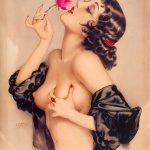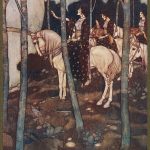Arthur Rackham (1867–1939), an English illustrator and artist, holds an esteemed place in the world of fantasy illustration and book art. Born on September 19, 1867, in London, Rackham’s prolific career spanned the late 19th and early 20th centuries, making an indelible mark on the visual storytelling landscape.
Rackham’s early artistic talents were evident from a young age, and he attended the Lambeth School of Art, where he honed his skills. His career began in the realm of newspaper and magazine illustration, gradually evolving to encompass book illustration, a field where he would achieve unparalleled success.
One of Rackham’s breakthrough moments occurred with his illustrations for Washington Irving’s “Rip Van Winkle” in 1905. These illustrations showcased his distinctive style characterized by intricate details, expressive lines, and a nuanced approach to capturing the essence of the narrative. His ability to seamlessly blend fantasy with a touch of the macabre set him apart in the world of illustration.
Rackham’s artistic vision found a perfect match in the realm of fairy tales and folklore. His illustrations for classic tales such as the Brothers Grimm’s “Hansel and Gretel,” Lewis Carroll’s “Alice’s Adventures in Wonderland,” and J.M. Barrie’s “Peter Pan in Kensington Gardens” elevated these works to new heights. Rackham’s interpretations added a layer of enchantment to these timeless stories, making them visually iconic.
The Golden Age of Illustration, a period from the late 19th to the early 20th century, saw Rackham’s illustrations becoming synonymous with high-quality book art. His collaboration with renowned authors, including Sir Arthur Conan Doyle, Edgar Allan Poe, and Jonathan Swift, further solidified his reputation as a leading illustrator of his time.
Rackham’s illustrations were characterized by a meticulous attention to detail, a rich use of color, and an ability to evoke mood and atmosphere. His depictions of mythical creatures, enchanted landscapes, and fantastical characters became synonymous with the fairy-tale genre. The intricate, almost ethereal quality of his artwork became a hallmark of Rackham’s contribution to the world of fantasy illustration.
Beyond his success in book illustration, Rackham’s versatility extended to watercolor painting and the creation of limited-edition prints. His exhibitions in London and the United States garnered acclaim, showcasing his ability to translate his illustrative skill into standalone works of art.
Despite the changing artistic landscape and the advent of new technologies, Rackham’s influence endured. His impact on subsequent generations of illustrators and fantasy artists is immeasurable. The Rackham style became an inspiration for countless illustrators who sought to capture the magic and whimsy inherent in fantastical narratives.
Arthur Rackham’s legacy lives on in the timeless quality of his illustrations, which continue to enchant readers and art enthusiasts alike. His ability to bring the written word to life through visual storytelling remains a testament to his enduring contribution to the art of illustration.
Rackham continued to work prolifically until his death on September 6, 1939. His illustrations, characterized by their enchanting allure and intricate details, stand as a testament to his lasting impact on the world of fantasy illustration and book art.
In conclusion, Arthur Rackham’s biography is a journey through the enchanting realms he created with his illustrations. His ability to infuse magic into the written word, coupled with his unique style and enduring influence, establishes him as a luminary in the world of fantasy illustration, leaving an indelible mark on the art of visual storytelling.






